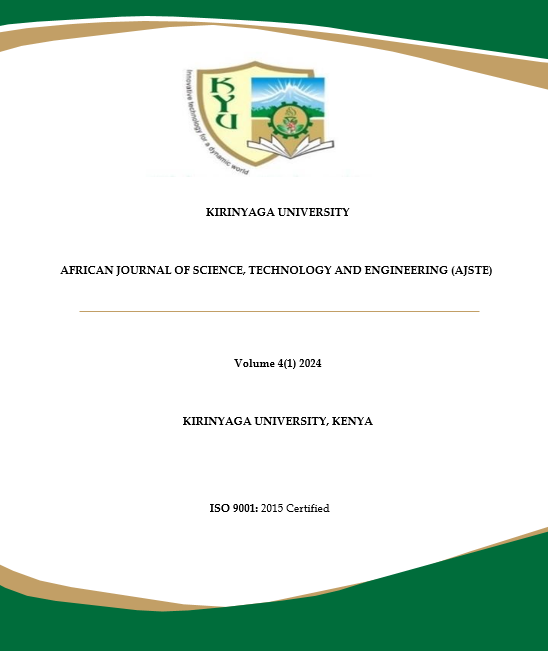Capability of Rule Based Classification Technique in Identifying Sprawl Areas: A Case Study of Areas around Eldoret Town, Kenya
Abstract
Use of satellite images to map urban land uses has been successful to varying degrees since the launch of medium resolution sensors producing images of 30 m spatial resolution. With this resolution, the extent of urban settlements can be detected. However, details of urban land use classes cannot be identified from 30m resolution images. With higher resolution images such as 10m Sentinel 2, most urban land use classes can be identified with fairly high classification accuracy using pixel-based classification techniques. Land use details, and hence classification accuracy can be improved using object-based image analysis (OBIA) techniques with the high resolution images. These techniques combine spectral, textural and spatial information to distinguish objects related to information classes. This study used rule based classification OBIA algorithms to accurately map urban land use classes and isolate the emerging sprawl settlements around Eldoret Town. Specifically, the study applied five variations of vegetation indices to extract land use/cover data from high resolution Sentinel-2 images of 2020 to identify urban sprawl areas. The analysis identified eleven urban sprawl areas with an overall classification accuracy of 91.67% and Kappa coefficient of 0.90. The findings confirm that use of rule based classification technique in LULC classifications gives high classification accuracy results.


